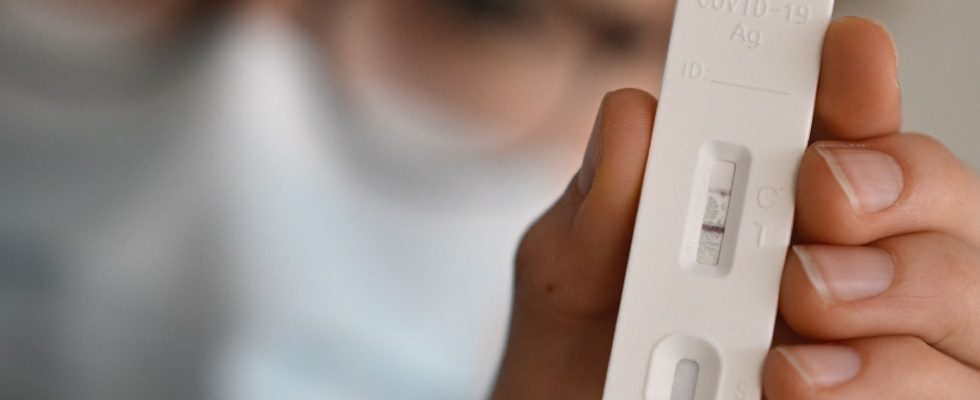Covid-19 is making a comeback. Wave, ripple or simple warning for the fall, where will the different respiratory viruses cohabit when the hospital is already in tension? The coming weeks will tell.
This summer re-emergence occurs under the sign of the mutations accumulated by the virus, which induce an increasing escape from the immunity acquired by vaccination and infections. If these new mutants are always more contagious, they are neither more nor less pathogenic. The one that circulates the most is called EG 5.1, from the Omicron recombinant family. However, the World Health Organization (WHO) estimated in mid-August that “based on the available evidence, the risk to public health posed by EG.5 is assessed as low at the global level”. The WHO is also tracking three so-called “interest” variants (XBB.1.5, XBB.1.16 and EG.5) and seven “under surveillance” variants: BA.2.75, CH.1.1, XBB.1.9.1, XBB .1.9.2 and XBB.2.3 and BA.2.86. This new kid has over thirty mutations on the Spike protein. But for now, none of these variants has been classified as “worrying”.
If they cause more cases at the moment, it is also because summer turns out to be the time of year with the strongest immune decline, equidistant from the two fall vaccination campaigns. In this context, the virus was able to take full advantage of large gatherings such as festivals, but also of smaller indoor gatherings, linked to inclement weather until the beginning of August.
The Covid has accustomed us to many surprises
Could we have anticipated this new increase in the number of infections? A completely innovative device existed in France since the first waves: the detection of the virus by PCR in “wastewater”, which had made it possible to make our country a European leader in this area. The Obépine (epidemiological observatory in waste water) and Comete (implemented by the marine firefighters of Marseille) projects, two initiatives from the field and research, have perfectly demonstrated their know-how in the analysis of raw water collected at the entrance to treatment plants. Since then, this alert system has proven itself with other pathogens – polio, monkeypox or gastroenteritis. But it is above all our neighbours, in England, Germany, the Netherlands, or Belgium, who have benefited from this innovation. Because in France, this effective monitoring method came to an abrupt halt, it seems due to a difficult transition between Obépine, carried by a team of academics, and the network proposed by the State, Sum’eau (Microbiological monitoring of wastewater). Launched in July 2021, it does not provide any data for the time being: it would still be in the “preparatory phase for the implementation of the target network” of 12 stations throughout the territory… Another means of monitoring and of anticipation, the sequencing of the virus. Here too, our country has disarmed itself. As of August 7, 7,354 EG.5 sequences have been submitted by 51 countries to Gisaid, the global database for genetic analyzes of the virus. Most of it came from China (30.6%) and only… 1.6% from France.
France has also abandoned almost all of its tools for monitoring the epidemic. The SI-DEP file (screening information system), which centralized the results of Covid-19 screening tests carried out by public or private laboratories and pharmacists, was stopped, as was the #TousAntiCovid application at the end of June. 2023. As for the key figures of Public Health France, they are also blocked at the end of June 2023. The unofficial Covid tracker site had already interrupted its services on March 31.
The Directorate General of Health, however, wants to be reassuring: “We are working to restore these indicators (the R, the positivity rate, the screening rate) next fall and winter”, she indicates. In the meantime, the only available indicators remain the Oscour bulletin (Organization of coordinated emergency surveillance), which lists visits to the emergency room and to SOS Médecins, as well as the compulsory declaration of Covid cases by biologists set up by decree on June 30, but for which no data is public to date.
There is nothing to say that these few data will be enough to understand the current re-emergence, while this Covid has accustomed us to many surprises.
